
On the last day of school this year, my 8th grade students gave me one of the greatest salutes a teacher can get.
They reenacted the closing scene of “The Dead Poets Society.”
You know. The one where Robin Williams’ Mr. Keating has been fired from a boarding school for teaching his students to embrace life, and as he collects his things and leaves, the students get up on their desks as a testament to his impact and as a protest to the current administration’s reductive standardization.
That’s what my students did for me. And I almost didn’t even notice it at first.
The whole thing went down like this.
The bell rang and an announcement was made telling us that the day was done.
I was immediately rushed by a crowd of children turning in final projects, shaking my hand, saying goodbye.
In fact, I was so occupied with the students right in front of me that I didn’t notice what was happening with the ones just behind them.
I heard someone say in a ringing voice, “Oh Captain, my Captain!”
I looked up and there they were.
About a dozen students were standing on their desks, looking down at me with big goofy grins.
Some had their hands on their hearts. One had raised his fist in the air. I think someone in the back was even making jazz hands. But they were each standing up there with the same look on their faces – a mixture of independence, humor and gratitude.
It shouldn’t have come as a surprise that this happened. Some of them had threatened months ago to make just such a demonstration.
We had watched the movie together back in April at the introduction of our poetry unit. I guess it was my way of trying to show them that poetry could make a deep impact on people. But I certainly hadn’t wanted them to put themselves at risk by standing on the furniture.
In fact, I had specifically cautioned them NOT to do this exact thing because someone might fall off their desk and hurt themselves.
But on the last day of school after the last bell has rung and my tenure as their teacher has expired – well, things are different then.
“Thank you,” I said. “That is really one of the nicest things students have ever done for me.”
Then I took out my phone and asked if I could snap a few pictures, because who’d ever believe me if I didn’t? They didn’t mind.
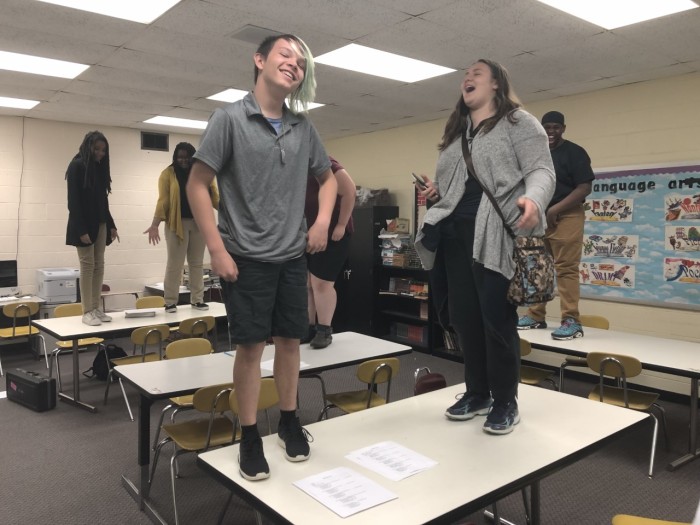

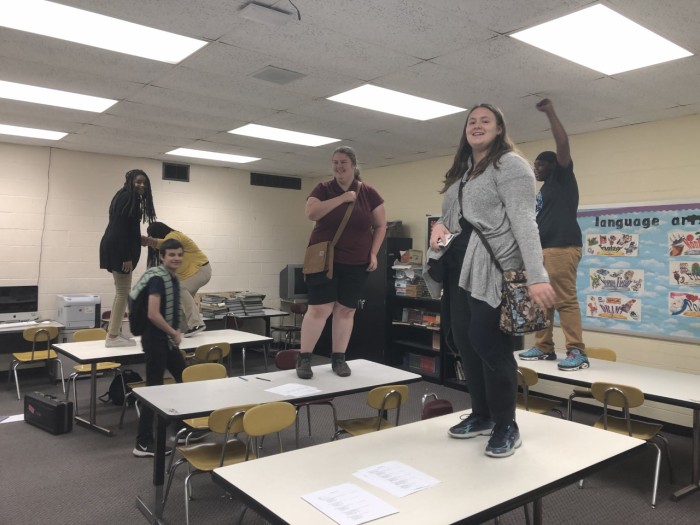
When I was done, they hopped down one at a time, many of them rushing forward to give me a hug.
This class will always be a special one in my heart.
We’ve come a long way together.
For most of them, I was their language arts teacher for two years. When they first came in the classroom they were just babies. Now they are going off to high school.
Unless you’re a parent, you wouldn’t believe how much kids can grow and change in just a few short years. And the middle school years are some of the most extreme. The line between child and adult fades into nothingness.
I’ve had a handful of children who were enrolled in my classes for multiple years before, but I’d never had so many. In some ways, we were more like a family than a classroom.
I had been there when parents got sick, left, died. I knew them all so well – who would ask questions just to stall, who never got enough sleep and why (often Fortnite), which ones had athletic aspirations, which were incredible artists, etc. Some had come out of the closet to me and their classmates but not at home.
Many of us went on a school field trip to Washington, DC, together. We’d toured the Holocaust Museum and Arlington National Cemetery. When I was invited to do a TED talk, they tracked it down on YouTube. They even found my Twitter account and made merciless fun of my profile picture. And when I actually had my book published on education issues last year, a bunch of my kids even came out to hear me talk about it at local book stores.
It’s hard to explain the depth of the relationship.
At the end of the year, I always give my students a survey to gauge how they think I did as their teacher. It’s not graded, and they can even turn it in anonymously.
The results are almost always positive, but this year, I got responses like never before:
“I love you, Mr. Singer. Thanks for a great 2 years. I will terribly miss you.”
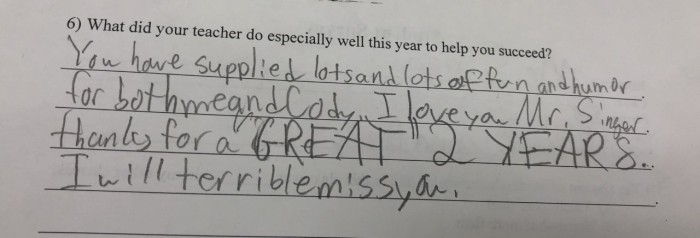
“I’ve never been bored here. You are the first teacher that made me want to go to their class and has been one of my favorites.”
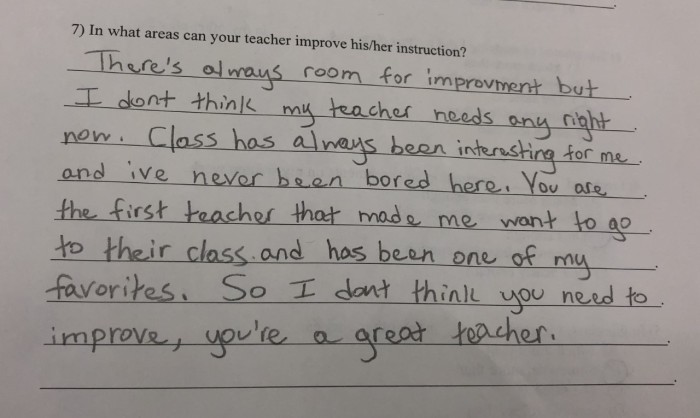
“He stayed cool as a cucumber and was never angry… Basically the greatest teacher I’ve had all year.”

He was “fair to all students.”

“He was more inclusive to many different groups.”

“He made sure I didn’t fool around. He let me hand in my work late. He was always very kind and he cares about us. He shows us that he cares about how we feel. He made sure everything was fair.”
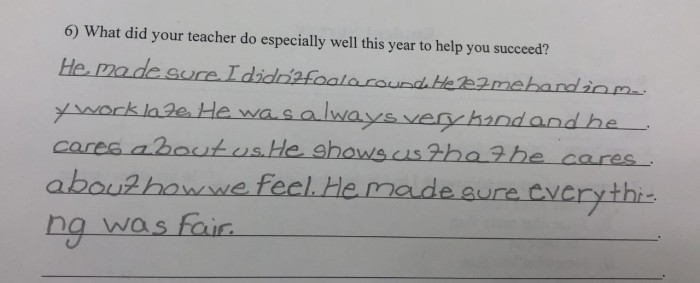
“He breaks things down A LOT better than other teachers. He’s a very nice person. I like the way he teaches.”

“Mr. Singer did well to motivate us and help us to succeed and get a better grade.”

“He explained things better than other teachers.”

“He helped me mentally and physically to be ready for the PSSAs. Also he gave us good books to read and not bad ones such as “The Outsiders,” “The Diary of Anne Frank,” and “To Kill a Mockingbird.” Also you taught me a lot these past 2 years to be ready for high school.”
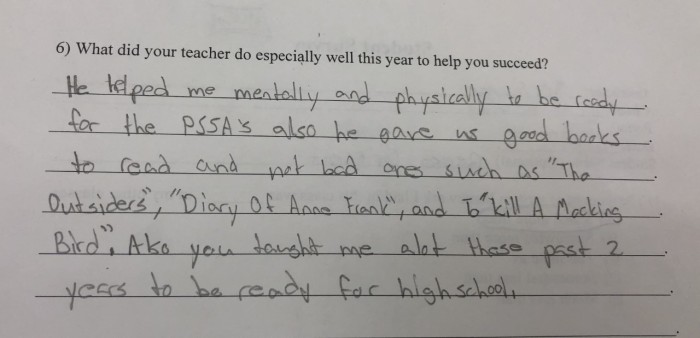
“To be absolutely honest, I don’t think my teacher needs to improve. He actually has done more than the rest of my teachers.”
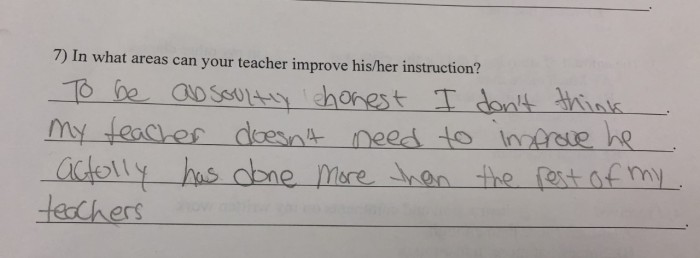
“Well he encouraged me to succeed more in his class and in life as well. He also taught me that the meaning of life is not how you take it but where you go with it. I’m thankful that he taught me more than the history my actual history teacher taught me. He also told me the truth of our history. He talked about the parts no one else would talk about.”
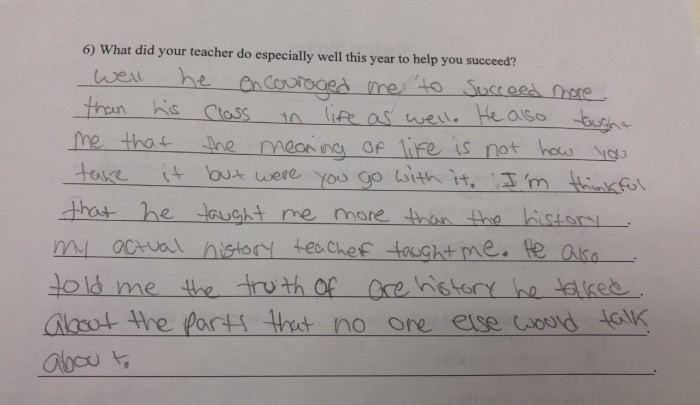
I’m not sure there’s much to say beyond that.
As these now former students reluctantly walked away in ones or twos, a few stayed behind.
I did a lot of reassuring that 9th grade would be great and that I’d probably be right here if they needed me.
I overheard one girl say to another that a certain teacher was good but not “Mr. Singer good.” I thanked her and she blushed because I wasn’t supposed to hear that.
There were tears. Some of them shed by me.
But when the last student left, I remained at my desk surrounded by a hum of fluorescent lights and ear numbing silence.
There is no emptiness like that of a space that has just been filled – a space that cries out for more.
My classroom is like that. And so is my heart.
Don’t get me wrong. I need this summer break to recover.
But I also need the end of August, when a new group of students will come rushing through those doors.
Here’s looking forward to the first day of school.
Like this post? I’ve written a book, “Gadfly on the Wall: A Public School Teacher Speaks Out on Racism and Reform,” now available from Garn Press. Ten percent of the proceeds go to the Badass Teachers Association. Check it out!


